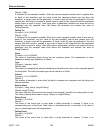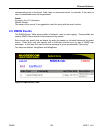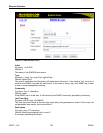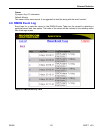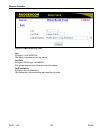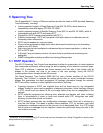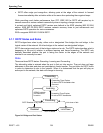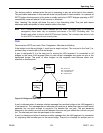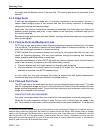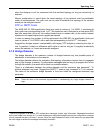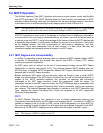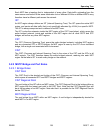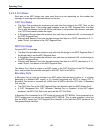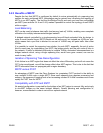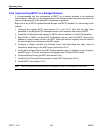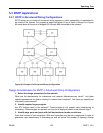
Spanning Tree
ROS™ v3.5 136 RS400
the bridge and will become active if that port fails. The backup port does not participate in the
network.
5.1.2 Edge Ports
A port may be designated an edge port if it is directly connected to an end station. As such, it
cannot create bridging loops in the network and can thus directly transition to forwarding,
skipping the listening and learning stages.
Edge ports that receive configuration messages immediately lose their edge port status and
become normal spanning tree ports. A loop created on an improperly connected edge port is
thus quickly repaired.
Because an edge port services only end stations, topology change messages are not generated
when its link toggles.
5.1.3 Point-to-Point and Multipoint Links
RSTP uses a peer-peer protocol called Proposing-Agreeing to ensure transitioning in the event
of a link failure. This protocol is point-to-point and breaks down in multipoint situations, i.e. when
more than two bridges operate on a shared media link.
If RSTP detects this circumstance (based upon the port’s half duplex state after link up) it will
switch off Proposing-Agreeing. The port must transition through the learning and forwarding
states, spending one forward delay in each state.
There are circumstances in which RSTP will make an incorrect decision about the point-to-point
state of the link simply by examining the half duplex status, namely:
• The port attaches only to a single partner, but through a half duplex link.
• The port attaches to a shared media hub through a full duplex link. The shared media link
attaches to more than one RSTP enabled bridge.
In such cases the user may configure the bridge to override the half duplex determination
mechanism and force the link to be treated in the proper fashion.
5.1.4 Path and Port Costs
The STP path cost is the main metric by which root and designated ports are chosen
2
. The path
cost for a designated bridge is the sum of the individual port costs of the links between the root
bridge and that designated bridge. The port with the lowest path cost is the best route to the root
bridge and is chosen as the root port.
How Port Costs Are Generated
Port costs can be generated either as a result of link auto-negotiation or manual configuration.
When the link auto-negotiation method is used, the port cost is derived from the speed of the
link. This method is useful when a well-connected network has been established. It can be used
2
In actuality the primary determinant for root port selection is the root bridge ID. Bridge ID is important mainly at
network startup when the bridge with the lowest ID is elected as the root bridge. After startup (when all bridges
agree on the root bridge’s ID) the path cost is used to select root ports. If the path costs of candidates for the root
port are the same, the ID of the peer bridge is used to select the port. Finally, if candidate root ports have the
same path cost and peer bridge ID, the port ID of the peer bridge is used to select the root port. In all cases the
lower ID, path cost or port ID is selected as the best.



